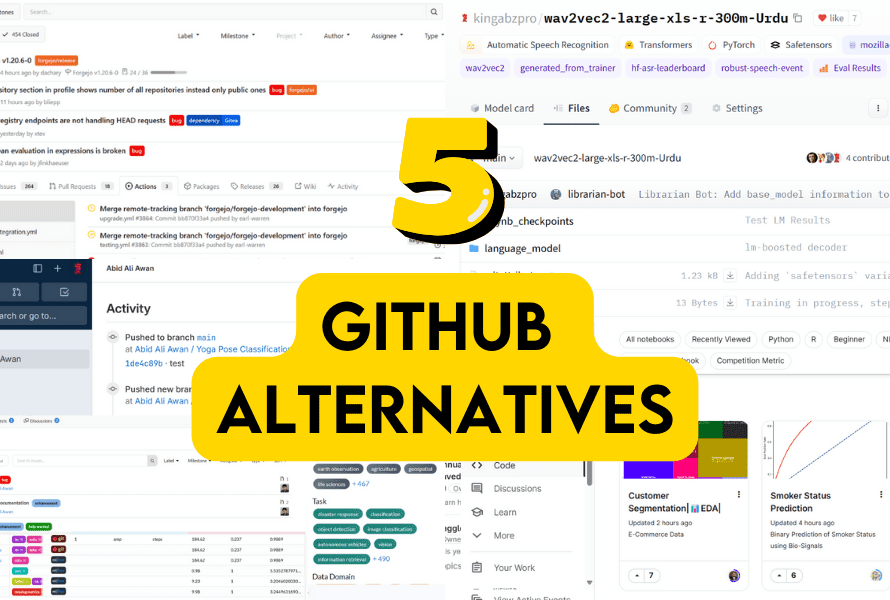[ad_1]

Image generated with ChatGPT
The ability to efficiently store, manage, and analyze vast amounts of information is crucial for any organization. As data continues to grow in volume and complexity, traditional databases often fall short of meeting modern demands. This is where next-generation databases come into play—designed to be fast, secure, and cost-effective, they offer innovative solutions for handling large-scale and diverse data issues.
In this blog, we will learn about seven modern SQL databases making waves in 2024. These databases provide robust performance and scalability and are equipped with advanced features like AI integration.
1. Dolt
Dolt is an open-source, version-controlled database that combines the power of Git with the functionality of a relational database. With Dolt, you can fork, clone, branch, merge, push, and pull databases just like you would with a Git repository.
Dolt is MySQL-compatible, allowing you to run SQL queries and use the command line interface to manage your data. This version-controlled database is ideal for collaborative environments where tracking changes and maintaining data integrity are paramount.
Just like GitHub, DoltHub is a place where people can share their database. You can access the public database for free just like GitHub.
2. MongoDB
MongoDB is a popular NoSQL database known for its flexibility and scalability. it uses a document-oriented data model, which allows for the storage of semi-structured data. With its flexible data model and rich ecosystem of tools and services, MongoDB is a favorite among developers and enterprises alike. Its ability to handle large amounts of unstructured data makes it an ideal choice for modern applications.
MongoDB is available in different environments, including MongoDB Atlas (a fully managed service in the cloud), MongoDB Enterprise (a subscription-based, self-managed version), and MongoDB Community (a free-to-use, self-managed version).
3. Redis
Redis is a fast in-memory database used as a caching, vector search, message broker, and NoSQL databases that seamlessly fit into any tech stack. Known for its high performance and low latency, Redis is widely used in real-time applications such as caching, session management, and real-time analytics. Its support for various data structures like strings, hashes, lists, sets, and more makes it a powerful tool for developers.
4. MindsDB
MindsDB is a platform that enhances SQL databases with machine learning capabilities. It allows you to build, fine-tune, and serve machine learning models directly within your database using familiar SQL syntax. MindsDB integrates with numerous data sources, including databases, vector stores, and applications, and popular AI/ML frameworks for AutoML and LLMs.
Imagine Transformers, LangChain, Vector database, OpenAI API, SQL and NoSQL database, and agents all in one, and you can access them using SQL syntax. It is a dream for data engineers and analysts.
5. Clickhouse
ClickHouse is an open-source columnar database management system designed for online analytical processing (OLAP). It is known for its high performance and efficiency in handling large volumes of data. ClickHouse is particularly well-suited for real-time analytics and big data applications, providing fast query performance and scalability.
Apart from being blazing fast, ClickHouse is developer-friendly as complex data analysis can be done using simple SQL. Moreover, it is cost-effective with compression ratios that reduce storage and accelerate performance.
6. Elasticsearch
Elasticsearch is a distributed, RESTful search and analytics engine built on Apache Lucene. It securely stores your data for lightning-fast search, fine-tuned relevancy, and powerful analytics that scale quickly. Elasticsearch is often used with the ELK stack (Elasticsearch, Logstash, Kibana) for log and event data analysis, making it a popular choice for monitoring and observability solutions. With Elasticsearch, you can easily tackle large-scale data challenges, ensuring that your search and analytics capabilities grow alongside your data.
7. Snowflake
Snowflake is a cloud-based data warehousing solution that offers a unique architecture to handle diverse data workloads. It separates storage and compute, allowing for independent scaling of resources. Snowflake supports structured and semi-structured data, providing robust data sharing and collaboration features. Its seamless integration with various cloud platforms makes it a go-to choice for modern data warehousing needs.
Final Thoughts
Picking the best database system is very important for how well your organization can handle, analyze, and get useful information from data. By understanding the strengths and features of these modern SQL databases, you can make informed decisions that align with your specific requirements. Using these technologies not only enhances your data engineering operations but also positions your organization for future growth and success.
Abid Ali Awan (@1abidaliawan) is a certified data scientist professional who loves building machine learning models. Currently, he is focusing on content creation and writing technical blogs on machine learning and data science technologies. Abid holds a Master’s degree in technology management and a bachelor’s degree in telecommunication engineering. His vision is to build an AI product using a graph neural network for students struggling with mental illness.
[ad_2]
Source link



